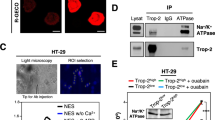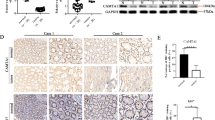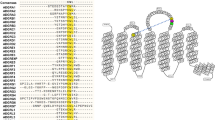Abstract
Decreased expression of C-CAM, a member of the CEA family of immunoglobulin like cell adhesion molecules, occurs in carcinomas of the colon, liver and prostate. Down regulation of C-CAM during the early stages of carcinogenesis in rat liver and human prostate has also been reported. We have recently shown that restoration of the expression of the isoform with long cytoplasmic domain, C-CAM1, leads to suppression of the tumorigenicity of prostatic carcinoma cells in vivo and growth suppression in vitro. These observations suggest that C-CAM1 may play an important role in regulating cell growth in normal tissues. Previous studies have demonstrated that the function of many members of the Ig-supergene family is dependent on interactions with cytoplasmic proteins. In the present study, we have used a bifunctional cross-linker to identify cellular proteins that interact directly with C-CAM1. Immunoblot analysis of WGA bound membrane proteins crosslinked with DSS identified a 180 kDa complex composed of C-CAM and an 80 kDa protein designated CAP-80 (C-CAM Associated Protein). Immunoprecipitation with anti-C-CAM antibodies showed that CAP-80 was co-precipitated with C-CAM from detergent solubilized, WGA-purified proteins. To assess the specificity of CAP-80 binding, the ability of CAP-80 to form stable complexes with C-CAM1 mutants expressed in insect cells was tested. Deletion of the cytoplasmic domain of C-CAM1 abolished complex formation whereas deletion of the extracellular Ig domains had no effect. These results suggest that a CAP-80 homologue (ICAP-80) is present in insect cells and ICAP-80 interacts with the cytoplasmic domain of C-CAM1. Replacement of Tyr488, a residue in the cytoplasmic domain known to be phosphorylated in vivo, with Phe did not diminish the association between C-CAM1 and ICAP-80, suggesting that Tyr488 phosphorylation is not required for association. The ability of various C-CAM1 mutants to associate with ICAP-80 correlated with their growth inhibitory activities, suggesting that ICAP-80/CAP-80 may play an important role in C-CAM1-mediated growth inhibition.
This is a preview of subscription content, access via your institution
Access options
Subscribe to this journal
Receive 50 print issues and online access
$259.00 per year
only $5.18 per issue
Buy this article
- Purchase on Springer Link
- Instant access to full article PDF
Prices may be subject to local taxes which are calculated during checkout
Similar content being viewed by others
Author information
Authors and Affiliations
Rights and permissions
About this article
Cite this article
Luo, W., Earley, K., Tantingco, V. et al. Association of an 80 kDa protein with C-CAM1 cytoplasmic domain correlates with C-CAM1-mediated growth inhibition. Oncogene 16, 1141–1147 (1998). https://doi.org/10.1038/sj.onc.1201619
Received:
Revised:
Accepted:
Published:
Issue Date:
DOI: https://doi.org/10.1038/sj.onc.1201619



